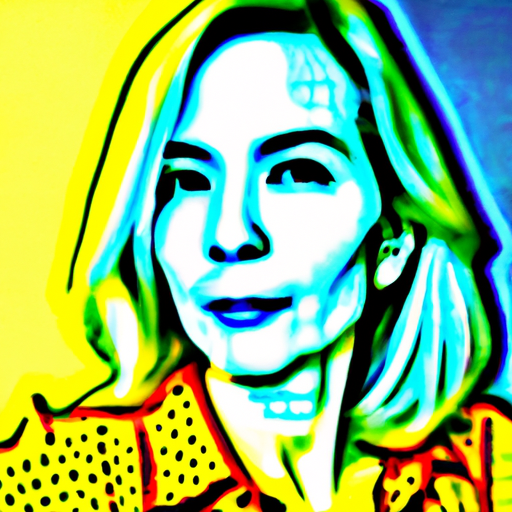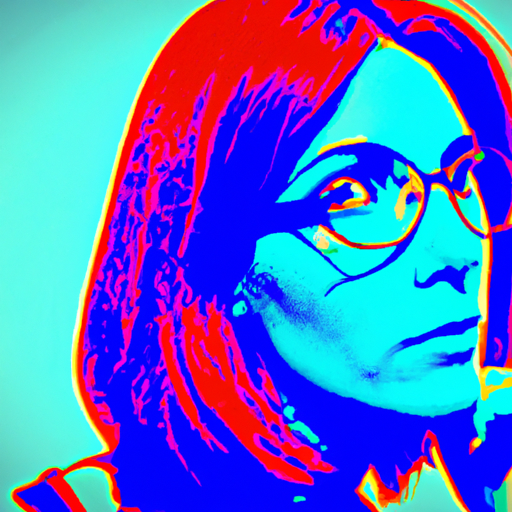
-
Table of Contents
- AI-Enhanced Photo to Illustration Conversion: Transforming Images with Artificial Intelligence
- The Rise of AI in Image Processing
- Understanding AI-Enhanced Photo to Illustration Conversion
- Style Transfer
- Image Generation
- The Benefits of AI-Enhanced Photo to Illustration Conversion
- Time Efficiency
- Artistic Flexibility
- Consistency and Reproducibility
- Accessibility
- Applications of AI-Enhanced Photo to Illustration Conversion
- Graphic Design and Advertising
- Entertainment and Media
- E-commerce and Product Visualization
- Education and Learning
- Real-World Examples
- Prisma
- DeepArt.io
- The Future of AI-Enhanced Photo to Illustration Conversion
AI-Enhanced Photo to Illustration Conversion: Transforming Images with Artificial Intelligence

Artificial Intelligence (AI) has revolutionized various industries, and the field of image processing is no exception. One fascinating application of AI in image processing is the conversion of photos into illustrations. This innovative technology combines the power of AI algorithms with artistic techniques to transform ordinary photographs into stunning illustrations. In this article, we will explore the concept of AI-enhanced photo to illustration conversion, its benefits, and its potential impact on various industries.
The Rise of AI in Image Processing
Over the past decade, AI has made significant advancements in image processing tasks such as object recognition, image classification, and image generation. Deep learning algorithms, particularly Convolutional Neural Networks (CNNs), have played a crucial role in these advancements. CNNs are capable of learning complex patterns and features from images, enabling them to perform tasks that were once considered challenging for machines.
One of the most exciting applications of AI in image processing is the conversion of photos into illustrations. Traditional methods of manual illustration require immense artistic skills and time-consuming efforts. However, with the advent of AI, this process has been automated, making it accessible to a wider audience.
Understanding AI-Enhanced Photo to Illustration Conversion
AI-enhanced photo to illustration conversion involves using AI algorithms to transform photographs into illustrations. The process typically consists of two main steps: style transfer and image generation.
Style Transfer
In the style transfer step, AI algorithms analyze the style of a given illustration and apply it to a photograph. This is achieved by training the AI model on a large dataset of paired photographs and illustrations. The model learns to extract the unique style elements from the illustrations and applies them to the photographs, resulting in a stylized image.
For example, if the AI model is trained on a dataset of photographs and corresponding watercolor illustrations, it can learn to transfer the watercolor style to any given photograph. The AI algorithm analyzes the color palette, brush strokes, and texture of the watercolor illustrations and applies similar characteristics to the photograph, creating a visually appealing watercolor-style illustration.
Image Generation
Once the style transfer is complete, the AI algorithm generates a new image that combines the content of the original photograph with the transferred style. This step involves leveraging generative models, such as Generative Adversarial Networks (GANs) or Variational Autoencoders (VAEs), to generate a new image that preserves the content while incorporating the desired style.
Generative models work by learning the underlying distribution of the training data and generating new samples that resemble the training data. In the context of photo to illustration conversion, the generative model learns to generate illustrations that resemble the style of the training illustrations while preserving the content of the original photograph.
The Benefits of AI-Enhanced Photo to Illustration Conversion
The emergence of AI-enhanced photo to illustration conversion brings numerous benefits to various industries and creative professionals. Let’s explore some of the key advantages:
Time Efficiency
Manual illustration is a time-consuming process that requires significant artistic skills and attention to detail. AI-enhanced photo to illustration conversion automates this process, allowing artists and designers to save valuable time. With AI algorithms handling the conversion, artists can focus on refining and enhancing the generated illustrations, rather than starting from scratch.
Artistic Flexibility
AI algorithms offer a wide range of artistic styles that can be applied to photographs. Whether it’s watercolor, oil painting, pencil sketch, or any other style, AI can generate illustrations that mimic the desired artistic effect. This flexibility allows artists and designers to experiment with different styles and find the perfect match for their creative vision.
Consistency and Reproducibility
AI algorithms ensure consistency and reproducibility in the conversion process. Once an AI model is trained on a specific style, it can consistently apply that style to any given photograph. This eliminates the variability and inconsistencies that may arise in manual illustration, where different artists may interpret the same style differently.
Accessibility
AI-enhanced photo to illustration conversion democratizes the world of illustration by making it accessible to a wider audience. Previously, only skilled artists could create high-quality illustrations. However, with AI algorithms, anyone can transform their photographs into professional-looking illustrations, regardless of their artistic abilities.
Applications of AI-Enhanced Photo to Illustration Conversion
The applications of AI-enhanced photo to illustration conversion are vast and span across various industries. Let’s explore some of the key applications:
Graphic Design and Advertising
Graphic designers and advertisers can leverage AI-enhanced photo to illustration conversion to create visually appealing and unique designs. By transforming photographs into illustrations, designers can add a touch of creativity and artistic flair to their designs, making them stand out in a crowded marketplace.
Entertainment and Media
The entertainment and media industry can benefit from AI-enhanced photo to illustration conversion in multiple ways. Illustrations can be used to enhance storytelling in movies, animations, and comics. Additionally, AI algorithms can convert photographs of actors or characters into stylized illustrations, creating promotional materials or merchandise.
E-commerce and Product Visualization
E-commerce platforms can utilize AI-enhanced photo to illustration conversion to showcase products in a visually appealing manner. By converting product photographs into illustrations, e-commerce websites can create a unique and artistic representation of their products, attracting customers and enhancing the overall shopping experience.
Education and Learning
AI-enhanced photo to illustration conversion can be a valuable tool in education and learning. Teachers and educators can transform educational materials, such as textbooks and presentations, into engaging illustrations. This visual representation can help students grasp complex concepts more easily and make learning a more enjoyable experience.
Real-World Examples
Several companies and researchers have already made significant progress in the field of AI-enhanced photo to illustration conversion. Let’s explore some notable examples:
Prisma
Prisma is a popular mobile app that utilizes AI algorithms to transform photographs into various artistic styles. The app offers a wide range of filters inspired by famous artists such as Van Gogh, Picasso, and Mondrian. Prisma’s AI algorithms analyze the content of the photograph and apply the chosen artistic style, resulting in stunning illustrations.
DeepArt.io
DeepArt.io is an online platform that allows users to transform their photographs into artistic illustrations. The platform utilizes AI algorithms to analyze the style of famous artworks and apply them to the user’s photographs. Users can choose from a variety of styles, including abstract art, impressionism, and pop art, among others.
The Future of AI-Enhanced Photo to Illustration Conversion
As AI
